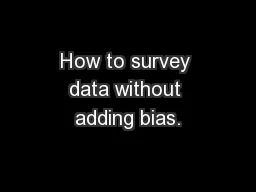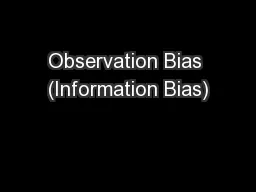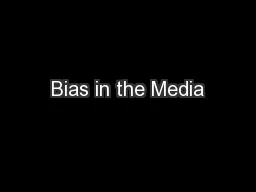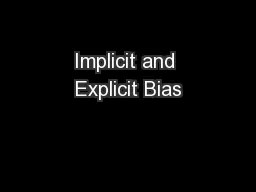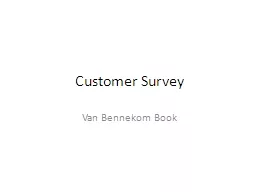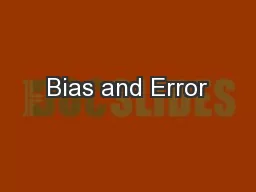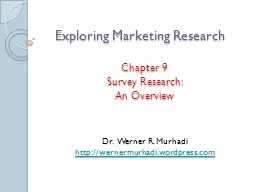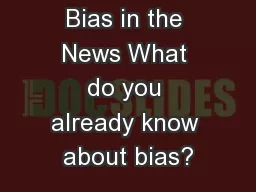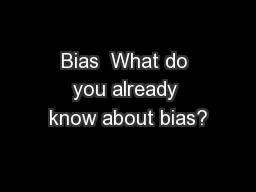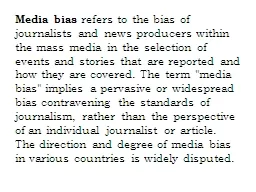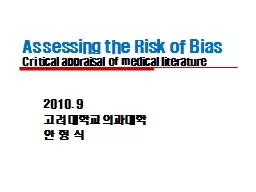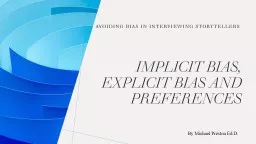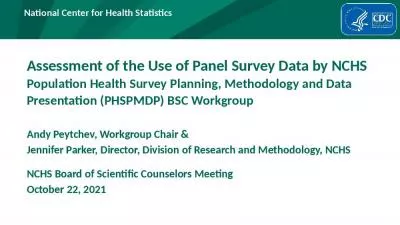PPT-How to survey data without adding bias.
Author : cheryl-pisano | Published Date : 2018-09-30
Biased or Unbiased What is bias In survey sampling bias refers to the tendency of a sample statistic to systematically over or underestimate a population parameter
Presentation Embed Code
Download Presentation
Download Presentation The PPT/PDF document "How to survey data without adding bias." is the property of its rightful owner. Permission is granted to download and print the materials on this website for personal, non-commercial use only, and to display it on your personal computer provided you do not modify the materials and that you retain all copyright notices contained in the materials. By downloading content from our website, you accept the terms of this agreement.
How to survey data without adding bias.: Transcript
Download Rules Of Document
"How to survey data without adding bias."The content belongs to its owner. You may download and print it for personal use, without modification, and keep all copyright notices. By downloading, you agree to these terms.
Related Documents

